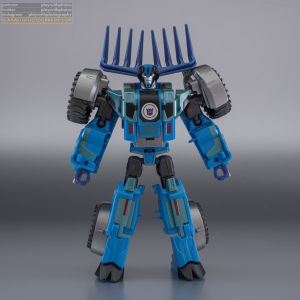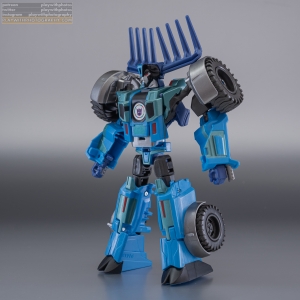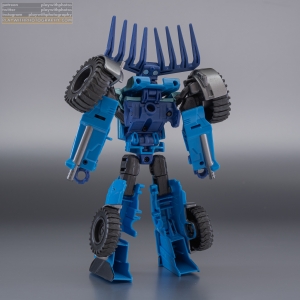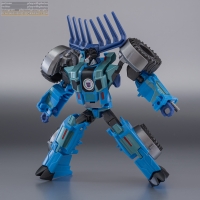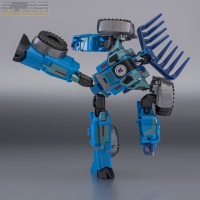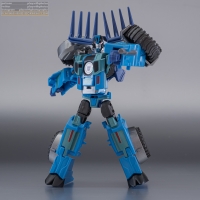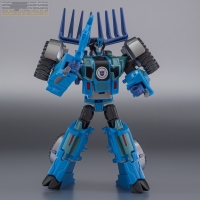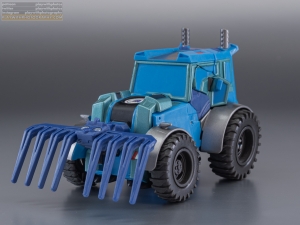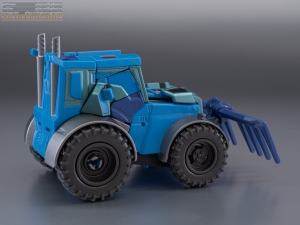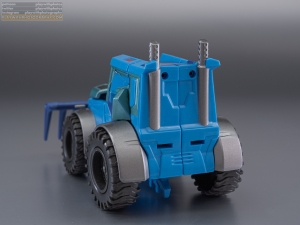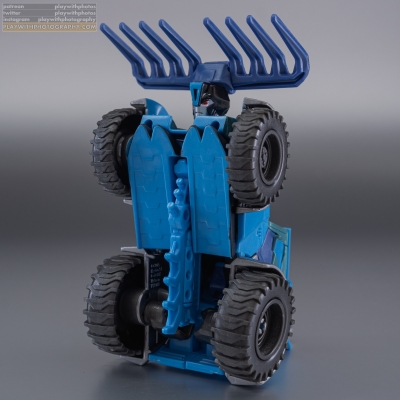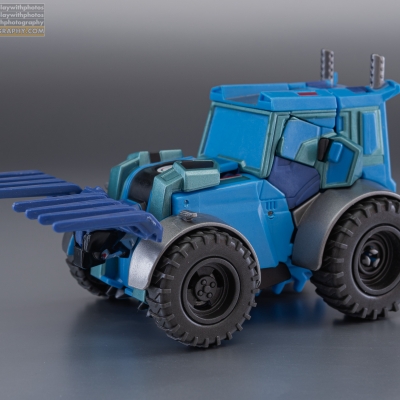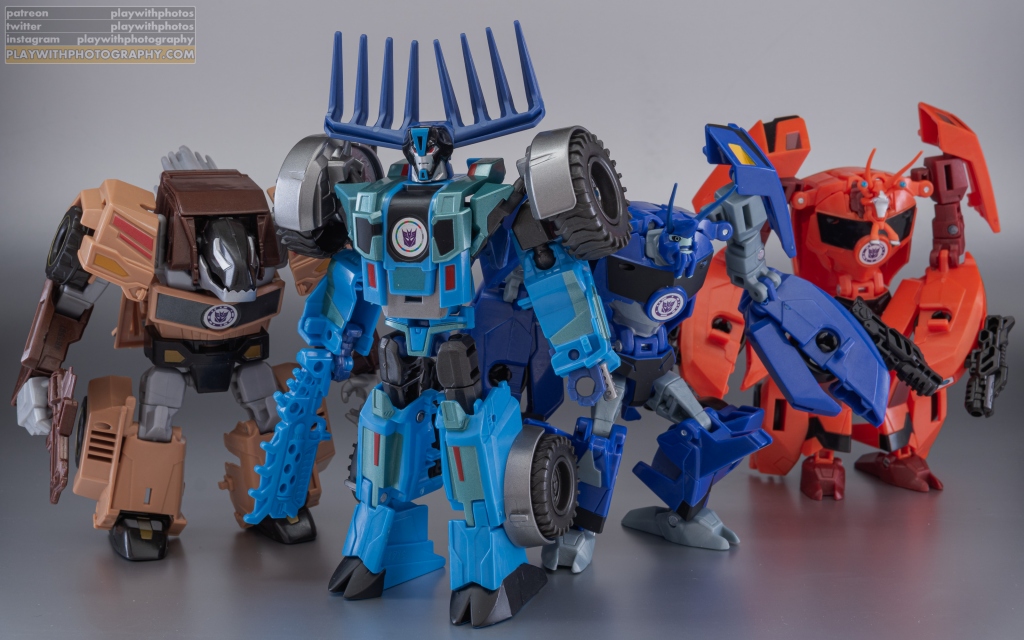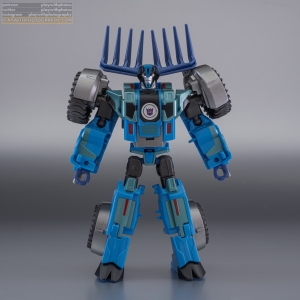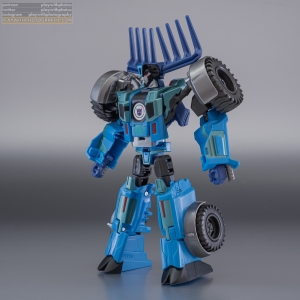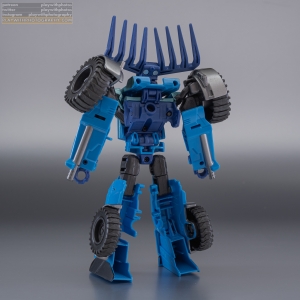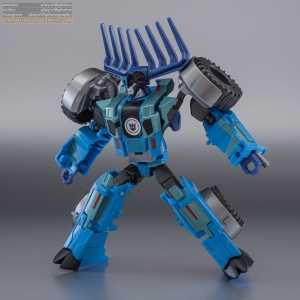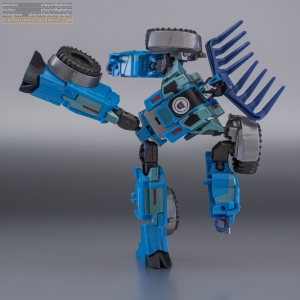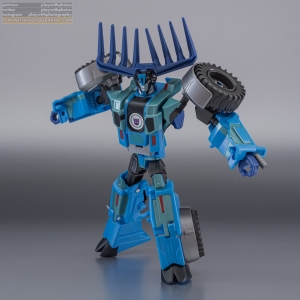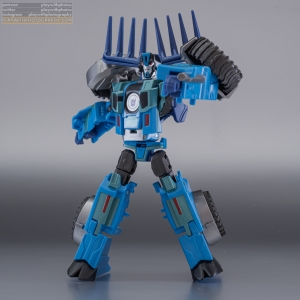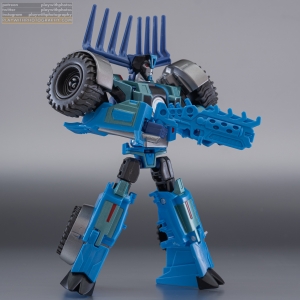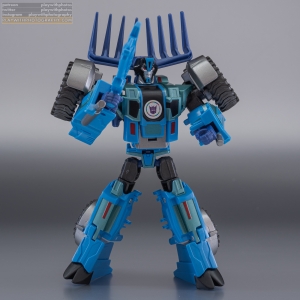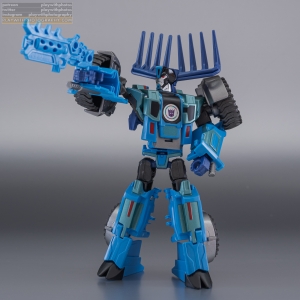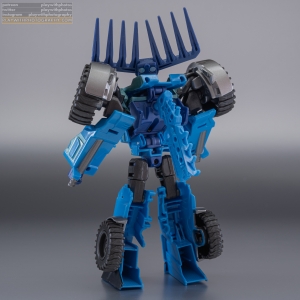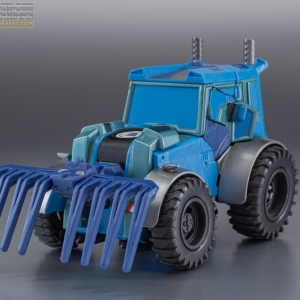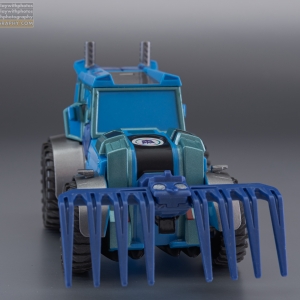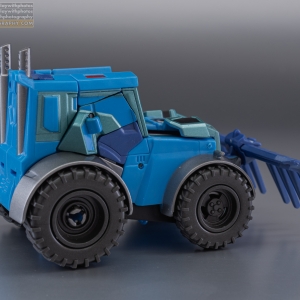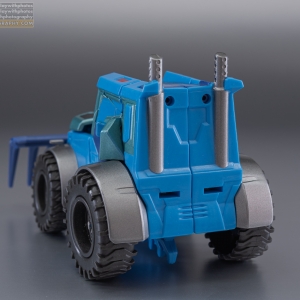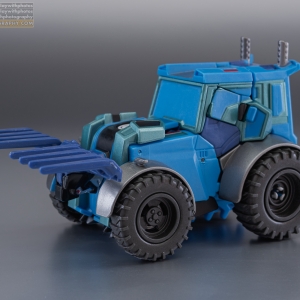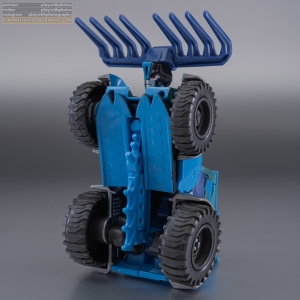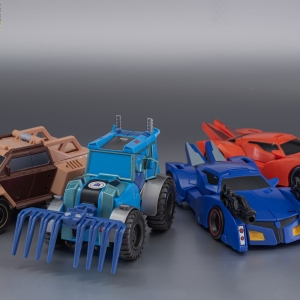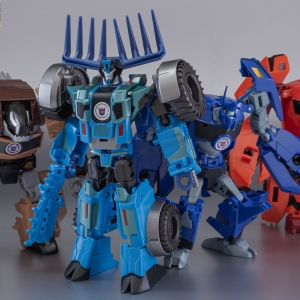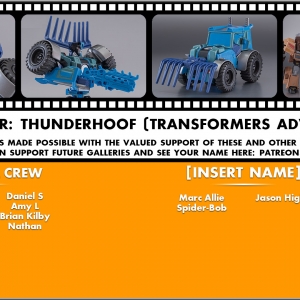Robots in Disguise (2015) was, and still remains one of my favorite modern Transformers lines. While admittedly a ton of its product was not meant for me (and that’s okay), there was the Warrior Class lineup through the whole three year run of the series. These were the Deluxe figures of RID – even Hasbro’s design team people casually referred to them as such in conversations I had with them – and while they weren’t quite the same as a Generations Deluxe, they were typically pretty good. And as time went on they got a lot better.
Supporters on Patreon make content like this possible! If you’d like to join, get your name on a credit page, access to early first looks, and help me continue to make more galleries and other assorted nonsense, click here or on the image above to head to Patreon and sign up!
Why did I enjoy RID enough to call it a favorite? Thunderhoof helps to demonstrate two of the major qualities, in fact! First is being a realm where original characters can be introduced. Thunderhoof, like so many, is new and unique to this line. The other thing, which is I guess almost an extension of the first, is design creativity, particularly with the Decepticons. For the first two years, they nearly all had robot modes with animalistic qualities, to varying degrees. Thunderhoof is on the more “traditional” end of the spectrum, with typical proportions and such, and only a couple of elements suggesting a bestial influence, the antlers, and the feet being styled like hooves. But Thunderhoof has another quality that I dig, which I’ll come back to.
What’s important now is the distinction between Robots in Disguise and Transformers Adventure. Adventure was TakaraTomy’s name for the line when they marketed it. And as was their custom, the Takara versions all had different decos, usually including a lot more paint work. Even without the Takara versions to compare to directly, Hasbro’s versions seemed unusually sparse with paint and color variation. That did get better over time, but for earlier figures it was usually preferable to get the Japanese releases if possible. This Thunderhoof is downright pretty, and the Hasbro one is basically just blue and black with little or no detail picked out.
Regardless of whose version you got, the design of the toys was of course the same. And while being equivalent, they were definitely made differently than a Generations Deluxe. How much impact that has on a basic level of handling varies, naturally, but it’s not uncommon to find some aspect or aspects that feel oddly limiting or sometimes even a little half-finished. For Thunderhoof it’s probably be the arms, where the big shoulder wheels and the forearm panels have a bad habit of getting in each other’s way. It’s more annoying than detrimental, since it’s still possible to get a range of decent poses out of it. But it’s one of those things where it feels like they were close to something very good but had to call it a day before they got there.
But there’s also reasons to have those big wheels and the corners-of-a-box forearms, and it’s the other particular quality that drew me to Thunderhoof as a design: A novel alternate mode! Despite the beastly robot forms, the Decepticons all still became regular (within the context of the setting) vehicles. And Thunderhoof is a tractor. Not a war machine, or a super car or demolition equipment. A tractor, with tilling forks on the front to get a small field ready to plant. After enough years of getting Transformers that all follow the same conventions of design, I developed a strong appreciation of and desire for different, unique alternate modes, and this more than qualifies. This is also an area where being the Takara release helps a lot, as the vehicle mode actually has deco implemented to pick out things like the windshield, or door frames. The paint in robot mode makes it look pretty; the same paint in vehicle mode actually makes it look like the thing it’s supposed to look like.
The tractor mode is actually quite good, too. It compacts down a lot compared to the robot mode, and because of that it doesn’t even have any real empty spaces visible. That’s not to say it’s perfect. The tilling forks being made of the robot’s moose antlers ends up requiring the robot head to hang out in front. From most angles that’s not really a problem, but it shows immediately if you end up looking from below. But a benefit of being built this way means you can effect a sort of attack mode by putting the antler-tines in robot mode orientation. Thunderhoof will poke you at a top speed of 12 mph!
RID (or Adventure) is something I miss a lot, and Cyberverse never really found a way to fill that absence. Now sure, by its third year, RID had also changed gears somewhat and was doing an increasing number of legacy characters as well as not having the same design focus on the Decepticons. It wasn’t all bad, since we did get a pretty nice Deluxe-size Bludgeon out of that, but I imagine that if RID had been allowed to keep going, it probably would have slowly ceased to be quite as charming as I originally found it. It probably was better to leave it on a relative high note.
For Sunday, there’s a big gallery coming up that I’m very excited to share! Don’t miss out, come back tomorrow for the 25th of Photober!

